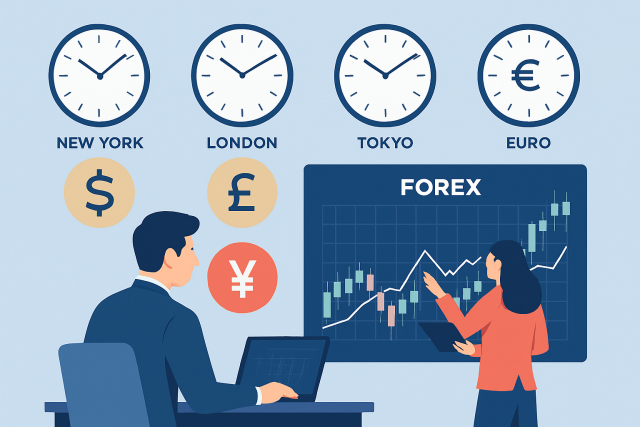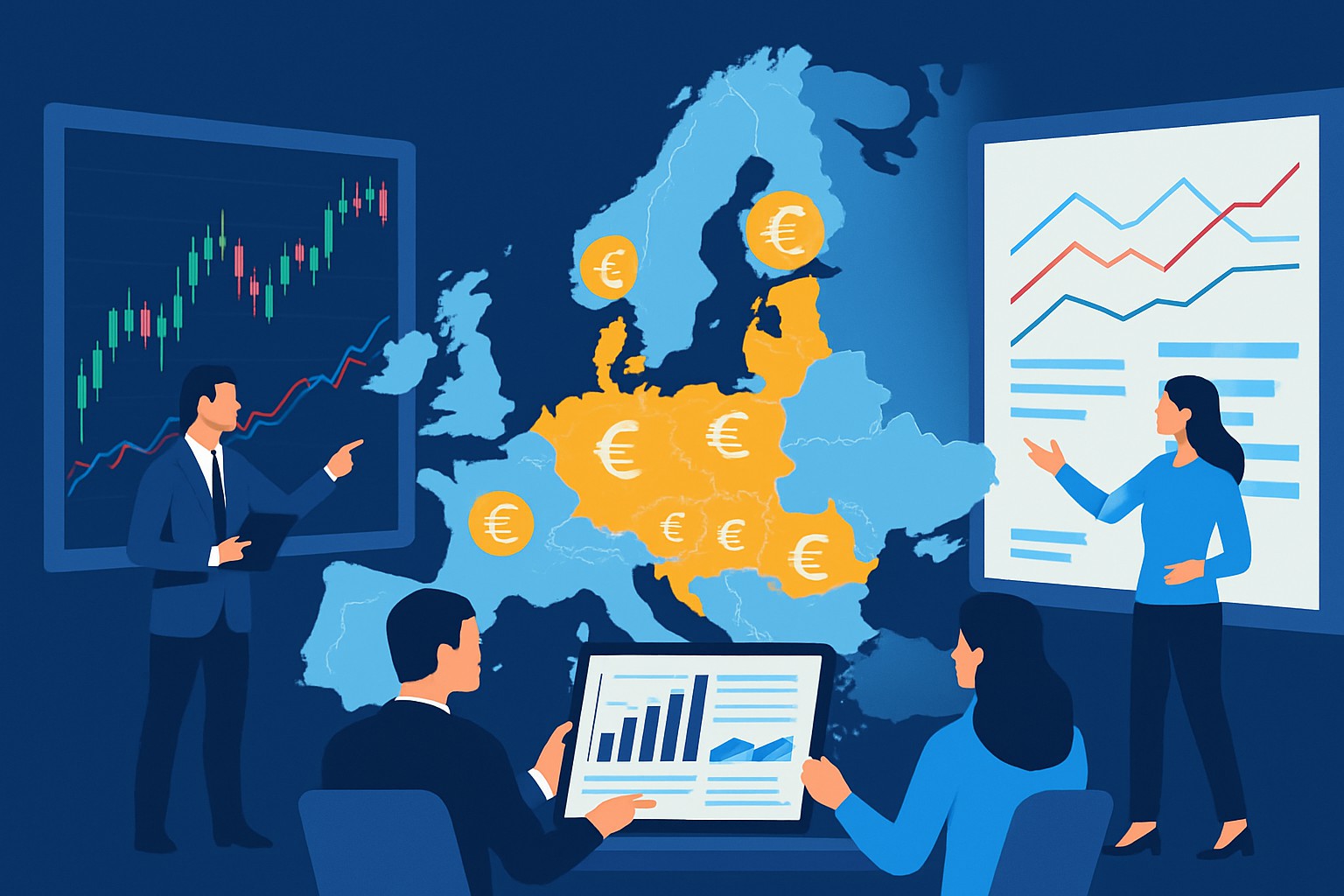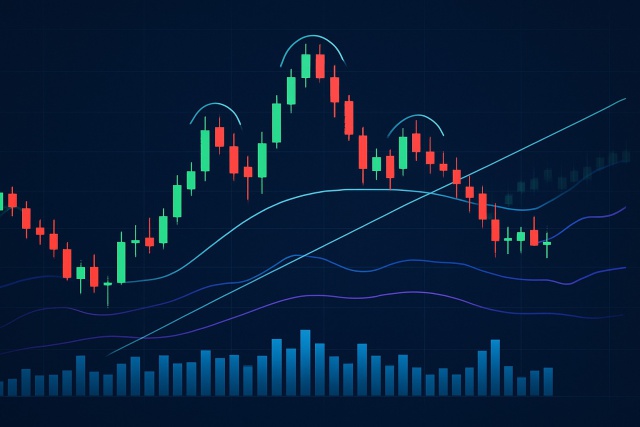
What Are Currency Exchange Market Hours?
Explore the ins and outs of currency exchange market hours. Understand how global trading sessions,...

The Eurozone holds a vital spot in global financial markets, quietly steering currency values and shaping trade patterns while nudging investment decisions in one direction or another.
Having a solid handle on the Eurozone is important because it shapes currency exchange rates and stock market indexes. It also influences monetary policy decisions that often ripple across the globe.
The Eurozone consists of European Union countries that have decided to adopt the euro as their official currency. It was established with the goal of unifying monetary policy and smoothing the bumps in trade between member states. Nowadays, it brings together a handful of countries that not only share the same currency but also operate under one central bank system.
Countries hoping to join the Eurozone have to jump through some strict hoops like keeping a tight leash on their budgets and making sure inflation doesn’t run wild. They also need to hold their exchange rates steady. Once they tick all these boxes they can finally adopt the euro.
The euro holds its ground as one of the major players in global trade and finance. It’s not just your everyday currency. It also serves as a top reserve currency and a key benchmark in forex markets. Its influence shapes trading volumes, guides investment flows and sets the tone for commodity prices worldwide.
The European Central Bank (ECB) steering monetary policy for the Eurozone really holds the reins when it comes to influencing trading markets. Its decisions on interest rates and subtle pushes of quantitative easing set the tone for much market action. The often-watchful policy signals also play a key role.
| Year | ECB Interest Rate Change | Euro Exchange Rate Movement (EUR/USD) | Eurozone Stock Index (DAX) Performance |
|---|---|---|---|
| 2020 | Rate cut to 0.00%, hitting rock bottom | Euro softened from 1.12 down to 1.08, losing some of its shine | DAX fell 3.6% before staging a bit of a comeback |
| 2021 | Held steady at 0.00%, no surprises here | Euro flexed its muscles, gaining strength to reach 1.22 | DAX climbed a solid 15%, making investors smile |
| 2022 | Raised rates to 1.25%, slowly turning the tide | Euro was all over the place, dropping to 1.03 in a rollercoaster ride | DAX rode the waves of volatility and ended the year pretty much flat |
| 2023 | Increased rates further to 3.50%, quite the hike | Euro finally settled around 1.09, catching its breath | DAX saw modest growth of about 5%, nothing to write home about but steady |
Traders work with a broad mix of financial instruments influenced by the Eurozone economy and the euro currency. These include popular forex pairs, key stock indices, Eurozone government bonds and exchange-traded funds tracking Eurozone assets.
Traders often lean on these instruments to place their bets on Eurozone economic trends or hedge against currency risks. They also seize opportunities that pop up when policies shift unexpectedly. Platforms such as TradingView come packed with handy charting tools and slick technical analysis features tailored for these assets.
Common approaches usually mean reacting to ECB announcements and staying tuned to geopolitical events that impact Eurozone countries. Traders make moves around key macroeconomic data drops like GDP or inflation figures. They often jump on opportunities from shifts in bond yields or dive into currency carry trades fueled by interest rate differences.
Keep a close watch on ECB policy updates since they often stir up serious ripple effects in both currency and stock markets. These moves tend to grab traders' attention for a reason.
It’s worth considering trading Euro futures or forex pairs ahead of key Eurozone economic releases because volatility usually shows up like clockwork around these events offering chances to make a play.
Pay attention to Eurozone bond yield trends as they can give you a good hint about shifts in risk appetite and where the market might be heading. Think of it as reading the room but with numbers.
Give currency carry trades a whirl by borrowing in currencies with lower interest rates and putting that cash to work in the euro aiming to pocket the difference in interest rates. It’s a classic move that’s hard to ignore.
People often lump the Eurozone together with the entire European Union or assume all member states are singing from the same economic hymn sheet. Sometimes there is the casual belief that the euro is risk-free and rock-solid, which is wishful thinking.
The Eurozone works a bit like an orchestra. Sure, all its members follow a single conductor, but each instrument brings its own unique flavor to the symphony. This blend creates that overall harmony we’re aiming for, though it also means economic events hit the markets in ways that can be a little tricky to predict—kind of like trying to keep time when the drummer’s playing a different beat.
Understanding how the Eurozone is put together and how it ticks gives traders a leg up when it comes to spotting market shifts and sizing up potential risks.
Are you tired of juggling multiple tools for your trading needs? TradingView is the all-in-one platform that streamlines your analysis and decision-making.
With its powerful charting capabilities, real-time data, and vibrant community, TradingView empowers traders like you to stay ahead of the market. Join thousands who trust TradingView for their trading success.
Elevate your trading game with TradingView, the ultimate platform for technical analysis and market insights. Gain access to advanced charting tools, real-time data, and a vibrant community of traders worldwide. Discover new opportunities and refine your strategies today.
17 posts written
Born in Athens, Ariadne Petrou is a leading expert in behavioral finance, exploring the psychological factors that influence trading decisions and market dynamics.
Read Articles
Explore the ins and outs of currency exchange market hours. Understand how global trading sessions,...

Options and futures represent key derivatives in markets. Understand their differences in obligation...

Unlock the power of the head and shoulders pattern with this complete guide. Learn to spot, trade, a...

El Salvador's adoption of Bitcoin as legal tender marks a groundbreaking experiment in national curr...
